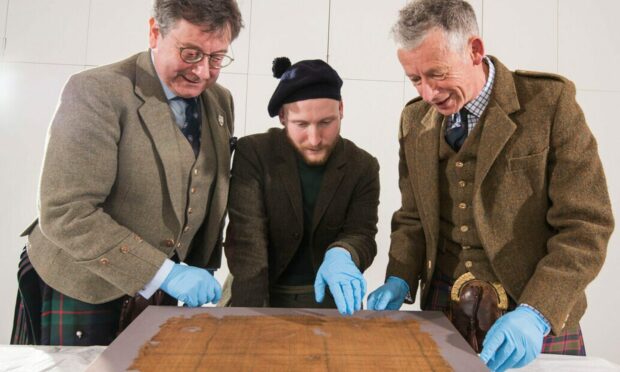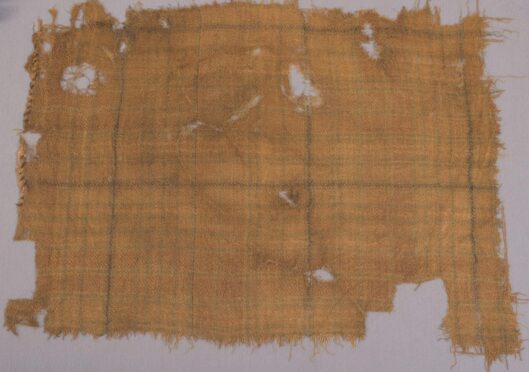A piece of tartan discovered in a Highlands peat bog and due to be displayed at V&A Dundee has been identified as the oldest in Scotland.
The Glen Affric tartan, named after the spot where it was found 40 years ago, can be dated back to circa 1500 to 1600 AD.
This makes it the oldest known surviving specimen of true tartan in the country.
The Scottish Tartans Authority commissioned dye analysis and radiocarbon testing to determine the age of the material.
Peter MacDonald, head of research and collections, said: “The testing process has taken nearly six months but the effort was well worth it and we are thrilled with the results.
“In Scotland, surviving examples of old textiles are rare as the soil is not conducive to their survival. As the piece was buried in peat, meaning it had no exposure to air, it was therefore preserved.
“The tartan has several colours with multiple stripes of different sizes, and so it corresponds to what people would think of as a true tartan.
“Although we can theorise about the Glen Affric tartan, it’s important that we don’t construct history around it.
“Although Clan Chisholm controlled that area, we cannot attribute the tartan to them as we don’t know who owned it.
“The potential presence of red, a colour that Gaels considered a status symbol, is interesting because of the more rustic nature of the cloth. This piece is not something you would associate with a king or someone of high status; it is more likely to be an outdoor working garment.”
Tartan to go on display at V&A Dundee
Scientists from National Museums Scotland used high resolution digital microcopy to identify four dye colours – green, brown, and possibly red and yellow.
They were also able to establish that it would been made pre-1750s as no artificial dyes were used to make the tartan.
It was then sent down to East Kilbride where all of the peat staining for radiocarbon testing which suggested the tartan was made between 1500 and 1600 AD.
Next month, the tartan will go on display for the first time as part of an exhibition at the V&A Dundee.
It will be the oldest exhibit among more than 300 objects which can be viewed by the public from Saturday, April 1 until January 14, 2024.
John McLeish, chairman of the Scottish Tartans Authority, said: “The Glen Affric tartan is clearly a piece of national and historical significance. It is likely to date to the reign of James V, Mary Queen of Scots, or James VI.
“There is no other known surviving piece of tartan from this period of this age. It’s a remarkable discovery and deserves national attention and preservation.”
James Wylie, curator at V&A Dundee, added: “I’m delighted the exhibition has encouraged further exploration into this plaid portion and very thankful for The Scottish Tartans Authority’s backing and support in uncovering such a historic find.
“To be able to exhibit the Glen Affric tartan is immensely important in understanding the textile traditions from which modern tartan derives, and I’m sure visitors will appreciate seeing this on public display for the very first time.”













Conversation